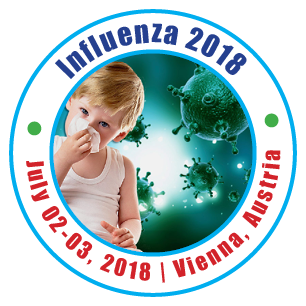
Biography
Biography: Jaroslav Turanek
Abstract
Aim: The aim is to present the latest developments in the field of noninvasive mucosal vaccination. Selected speakers will cover topics like systems for mucosal vaccination, mucosal molecular adjuvants, mRNA constructs for vaccination, influenza virus pseudotypes, recombinant antigens and antigen formulations for mucosal delivery.
Statement of the Problem: Vaccination remains the principal way to control seasonal flue infections and is the most effective method of reducing influenza-associated morbidity and mortality. Mucosal vaccination represents non-invasive route for immunization having advantage in safety, efficacy and comfort for vaccinees, in general. At present, inactivated, live attenuated and recombinant vaccines for intradermal, intramuscular and intranasal application are licensed and in use.
Methodology & Theoretical Orientation: Advent of reverse vaccinology together with availability of recombinant technologies for economic massive production of recombinant antigens and mRNA constructs, new biocompatible nanomaterials and molecular adjuvants are prerequisites for successful development and commercialization of influenza vaccines. Especially mRNA-based influenza vaccines represent promising approach for rapid development of seasonal influenza vaccine. Recombinant antigens based on complex nanoparticles like VLP and virus pseudotypes, recombinant protein antigens derived from influenza virus and chimeric multiepitopic or fused complex protein antigens represent valuable tools for development of modern influenza vaccines. Beside intranasal vaccination, sublingual application of vaccines is of growing interest with respect to safety and induction of both systemic and generalized mucosal immune response. Development and application of new mucoadhesive films drives forward the development of mucosal vaccines. Great potential is hidden in the use of biocompatible nanomaterials, especially nanofibre- based cloth. Polymeric and lipid based nanoparticles are available as carriers for construction of vaccination nanoparticles containing mRNA or recombinant protein antigens. New materials also facilitate a development and use of new technologies for vaccine production (e.g. printing of antigen onto nanofibre-based mucoadhesive film).

